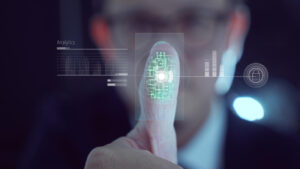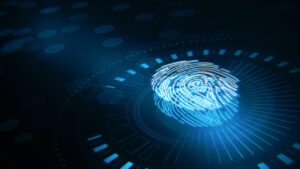Biometric security, a cornerstone of modern-day digital authentication, is evolving to safeguard our personal information from malicious actors stated Bahaa Abdul Hadi. As technology progresses, new frontiers emerge, and voice analytics is taking center stage as a promising addition to the arsenal of biometric tools.
This innovative approach leverages the unique vocal characteristics of individuals to enhance security measures. Voice analytics is not only changing the game but also improving user convenience. In this blog, we’ll explore the fundamentals, advantages, and real-world applications of voice analytics in biometric security.
The Advantages of Voice Analytics in Biometric Security
Voice analytics in biometric security offers a multitude of advantages. First, it stands out for its remarkable accuracy and reliability, with the ability to differentiate even subtle vocal nuances. Plus, it prioritizes user convenience by eliminating the need for physical contact, like fingerprint scanning or facial recognition, and allows for a more natural authentication process.
Its non-intrusive nature is a significant boon, making it user-friendly without compromising on security. Industries, ranging from banking and healthcare to law enforcement and IoT devices, are embracing this technology for its adaptability and robustness.
Challenges and Concerns
Voice analytics in biometric security is not without its share of challenges and concerns. One pressing issue pertains to privacy and ethical considerations. Collecting and analyzing voice data raises questions about consent and potential misuse.
Additionally, vulnerabilities and potential threats pose risks to this technology. Cybercriminals could exploit weaknesses in voice analysis systems to gain unauthorized access. To address these concerns, constant improvement is essential. Rigorous testing and security measures must be in place to mitigate risks effectively.
Real-World Applications
Voice analytics finds practical applications across diverse industries. In the banking and financial services sector, it’s revolutionizing customer authentication and fraud prevention, enhancing security without compromising user experience. In healthcare, voice analysis plays a pivotal role in patient identity verification, ensuring the right treatment and data security.
Law enforcement and the criminal justice system use voice analytics for voice-based evidence analysis and suspect identification. Also, in the realm of IoT devices, it ensures secure access to connected appliances and systems. These real-world applications demonstrate the versatility and effectiveness of voice analytics, solidifying its position as a game-changer in biometric security across various sectors.
Conclusion
Voice analytics represents a transformative leap forward in the field of biometric security. Its potential for enhancing security measures while prioritizing user convenience is undeniable. However, it’s essential to acknowledge the challenges and concerns associated with voice analytics, particularly in the realm of privacy and potential vulnerabilities.
Continuous improvement and robust security measures are paramount in addressing these issues. Looking ahead, the future of voice analytics in biometric security is promising, with ongoing technological advancements and its integration with AI and machine learning. With wider adoption and standardization, voice analytics is poised to play a pivotal role in shaping the security landscape of tomorrow. The blog was written by Bahaa Abdul Hadi and has been published by the editorial board of Identity Herald. For more information, please visit www.identityherald.com.




